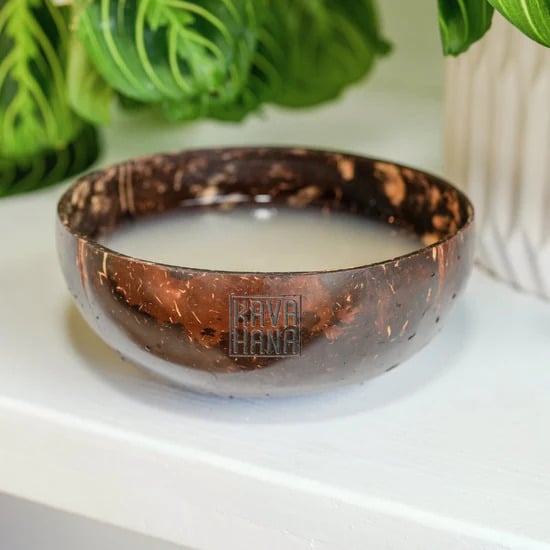For centuries, kava has been consumed in pacific island cultures. It’s celebrated for its use in cultural and religious ceremonies as well as for its medicinal properties. Kava is made by harvesting the roots of the pepper plant, piper methysticum, which are then dried, ground into powder, mixed with water, and strained before drinking. But you can also make kava with coconut.
While there is some debate about whether Vanuatu or New Guinea was the first place kava was discovered, it’s also connected to six other island nations; Hawaii, Tonga, Fiji, Samoa, Micronesia, and French Polynesia. While the plant itself is the same, it differs in composition and effects between the nations due to variation in their environments.
Traditionally kava is drunk the same way; combined with water and served in bowl often made of coconut. However, with the expansion of kava being used outside of the south pacific, it has started to be mixed with other things like coconut milk and juices. And while there has been an uproar about this, the truth is that this has been already been done for centuries.
The origins of kava with coconut
Many kava purists argue that kava should only be prepared with water to honor its cultural roots. The tradition is rich and connects to many important ceremonies and cultural practices in the south pacific. And while most cultural kava, such as cultivars from Vanuatu and Fiji, have been made with water exclusively, it may come as a surprise that this is not always the case. However, other cultures make kava with coconut milk or water.
King Kamehameha, the first king of Hawaii and known for his role in unifying the Hawaiian island is known to have made his kava in several different ways depending on the ceremony- this includes making kava with coconut. Research shows that he is known for using water from a special spring or from a specific type of coconut. It’s even mentioned that King Kamehameha added other ingredients such as ‘olena (Hawaiian for turmeric) or particular types of sugar cane for certain special occasions.
What’s in a coconut
There is a rich history in preparing Hawaiian kava with coconut. While the reasons remain unclear, there are two types of coconuts that were used; the Niu lelo (yellow coconut) and the Niu Hiwa (black coconut). The main differences of these is that Niu hiwa was used for ceremonies, medicinally and for cooking, whereas Niu lelo was used for many other things but not for ceremonies. This led to King Kamehameha using yellow coconut to prepare for the men in the village and black was prepared for the gods. There are thoughts that the ‘olena was added for its cleansing properties and that some types of sugar cane, like the pi`ihouna cane was red in color symbolically representing the high status of the chief.
The value of kava with coconut
A newer argument for making kava with coconut milk and coconut water is that it adds nutritional value and enhances the effects. Coconut milk is linked to many health benefits like improving cholesterol levels, may have positive effects on metabolism and weight, and has antioxidant and anti-inflammatory qualities that may protect your cells from damage, and protect you from getting sick. It is also loaded with healthy fats (medium-chain fatty acids) that are associated with improving cognitive function.
The fats in coconut milk are also known to enhance kava’s effects making them stronger and potentially last longer. While there is no research on this yet, there is a lot of historical data that suggests this is true. Kavalactones, the active ingredients in kava, are fat soluble. This means they easily dissolve into fats enhancing their extraction and giving you a stronger effect. This has to be done correctly, however, by making sure you know how your body responds to kava so you’re prepared for a stronger experience.
Food for thought
It needs to be said that despite the uproar in changing traditions, many pacific island cultures were already doing that. While kava started out as a drink used for ceremonial and medicinal purposes, it’s now commonly used recreationally as well. Just the fact that we are lucky enough to be able to consume kava at all in North America shows the cultural evolution of the drink. In fact, a research paper published back in 2001, which discusses local Vanuatu natives perceptions of kava and how it’s evolved mentioned that local kava bars have started to serve kava in glass or ceramic cups rather than the traditional coconut shell. It’s even said that islanders will throw in different fruits for added flavor, like bananas, apples and oranges. This is certainly a change from the old times.
So while seeing traditions change can be scary, it’s not always bad. In fact, in many cases it allows for tradition to live on. And in the case of kava, the culture behind it runs so deep that the story and traditions connected to it will never go away.
* Please note that the majority of kava research pertains to kava extracts, which often undergo significant processing and may contain additional ingredients and fillers that can influence their efficacy. It is crucial to consider this distinction when reading about kava studies. To draw an analogy, enjoying natural kava as a beverage can be likened to experiencing a freshly brewed cappuccino, whereas kava extracts are akin in functionality to a caffeine pill. Both forms have their unique benefits and can cater to different preferences and needs. While it’s helpful to understand research on kava extracts, please view it critically and remember that natural kava offers a uniquely holistic experience.


